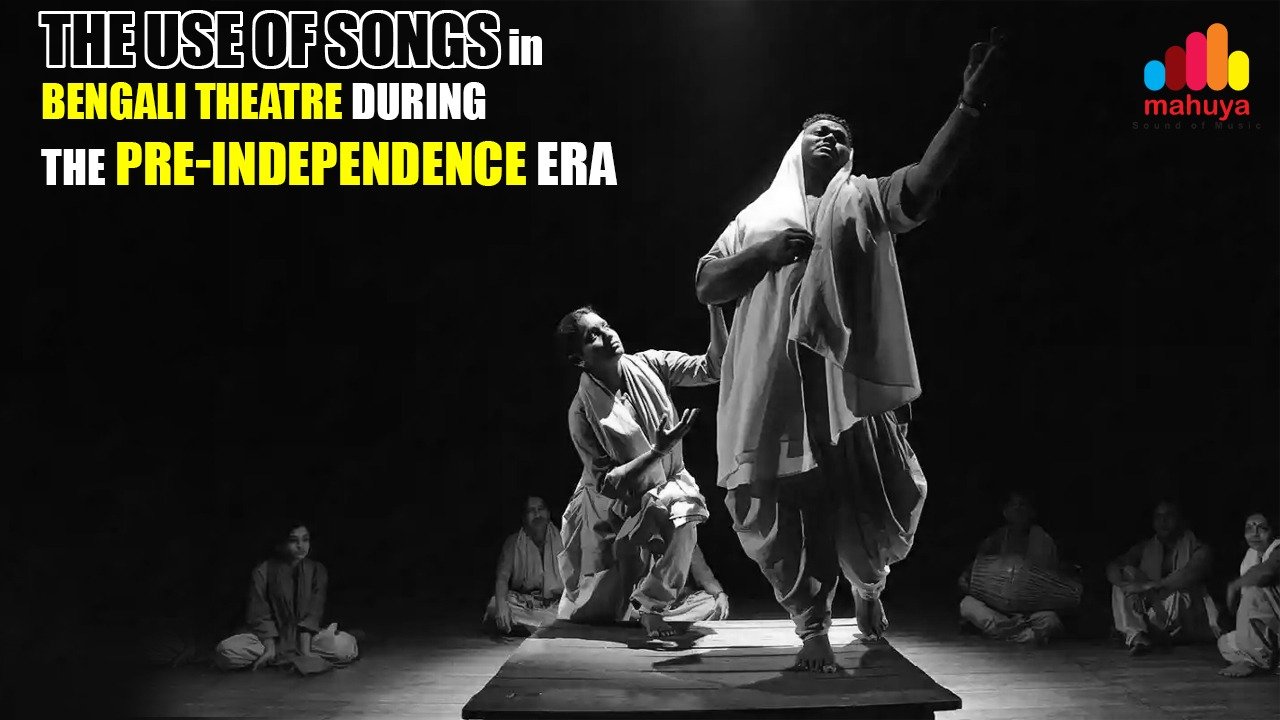Bengali theatre has a rich and vibrant history, deeply intertwined with the cultural and political landscape of Bengal. During the pre-independence era, theatre was not just a form of entertainment but a medium of social and political commentary. Songs played a crucial role in these theatrical productions, serving as powerful tools to convey messages, invoke emotions and inspire action. This blog explores the use of songs in Bengali theatre during this transformative period, highlighting their significance and impact.
The Evolution of Bengali Theatre
The roots of Bengali theatre can be traced back to the late 18th century, with the establishment of the first Bengali theatre by Gerasim Lebedeff; a Russian adventurer, linguist and writer, in 1795. He was the first person to use Indian tunes in Western musical instruments. However, it was in the 19th century that Bengali theatre truly began to flourish, influenced by the Bengal Renaissance and the socio-political changes of the time. The theatre became a platform for intellectuals and artists to express their views on colonial rule, social injustices, and the quest for independence.
The Role of Songs in Bengali Theatre
Songs in Bengali theatre were more than just musical interludes; they were integral to the narrative and demonstration of the plays. These songs often drew from traditional Bengali music, including folk songs, devotional music and classical ragas, creating a rich tapestry of sound that resonated with the audience.
During the pre-independence era, songs in Bengali theatre served several purposes:
1. Conveying Political Messages: Many songs were explicitly political, criticising British rule and calling for independence. For instance, the songs of Mukunda Das, a prominent figure in Bengali theatre, were known for their patriotic fervour and revolutionary zeal. His compositions, such as "Maayer Deoa Mota Kapor" and "Otho Go Bharatlakhhi," became anthems of the freedom movement.
2. Reflecting Social Issues: Songs were also used to highlight social issues such as poverty, caste discrimination and women's rights. Plays like Dinabandhu Mitra's "Nildarpan," which depicted the exploitation of indigo farmers, included songs that underscored the plight of the oppressed.
3. Enhancing Emotional Impact: The emotional power of songs was harnessed to deepen the audience's connection to the characters and the story. Rabindranath Tagore, a luminary of Bengali literature and theatre, masterfully used songs in his plays to express a range of emotions, from sorrow and longing to hope and defiance.
Key Figures and Contributions
Several key figures in Bengali theatre made significant contributions to the use of songs in their productions:
- Rabindranath Tagore : Tagore's plays, such as "Dak Ghar" and "Raktakarabi," are renowned for their lyrical beauty and profound themes. His songs, often based on classical and folk traditions, were integral to his theatrical works, enhancing their poetic and philosophical depth.
- Girish Chandra Ghosh : Known as the father of Bengali theatre, Ghosh incorporated traditional Bengali music into his plays, blending it with contemporary themes. His productions often featured kirtan-anga songs, khyāmtā, and tappā, creating a unique musical experience.
- Kazi Nazrul Islam : The "Rebel Poet" of Bengal, Nazrul's songs were characterised by their revolutionary spirit and passionate intensity. His works, such as "Chal Chal Chal," were performed in numerous theatrical productions, inspiring audiences to join the struggle for independence.
The Impact of Songs on Bengali Theatre
The use of songs in Bengali theatre had a profound impact on both the art form and the society at large. These songs helped to popularise theatre among the masses, making it an accessible and powerful medium for social and political change. They also contributed to the development of a distinct Bengali cultural identity, rooted in the region's musical and literary traditions.
Moreover, the legacy of these songs continues to influence contemporary Bengali theatre and music. They are performed in modern productions, commemorative events, and cultural festivals, serving as a reminder of the rich heritage and enduring spirit of Bengali theatre.
Conclusion
The use of songs in Bengali theatre during the pre-independence era was a testament to the power of music as a tool for expression and mobilisation. These songs, crafted by visionary artists and performed in compelling theatrical productions, played a crucial role in shaping the cultural and political landscape of Bengal. Their legacy continues to inspire even today, highlighting the eternal connection between art and activism.




Comments In This Topic: